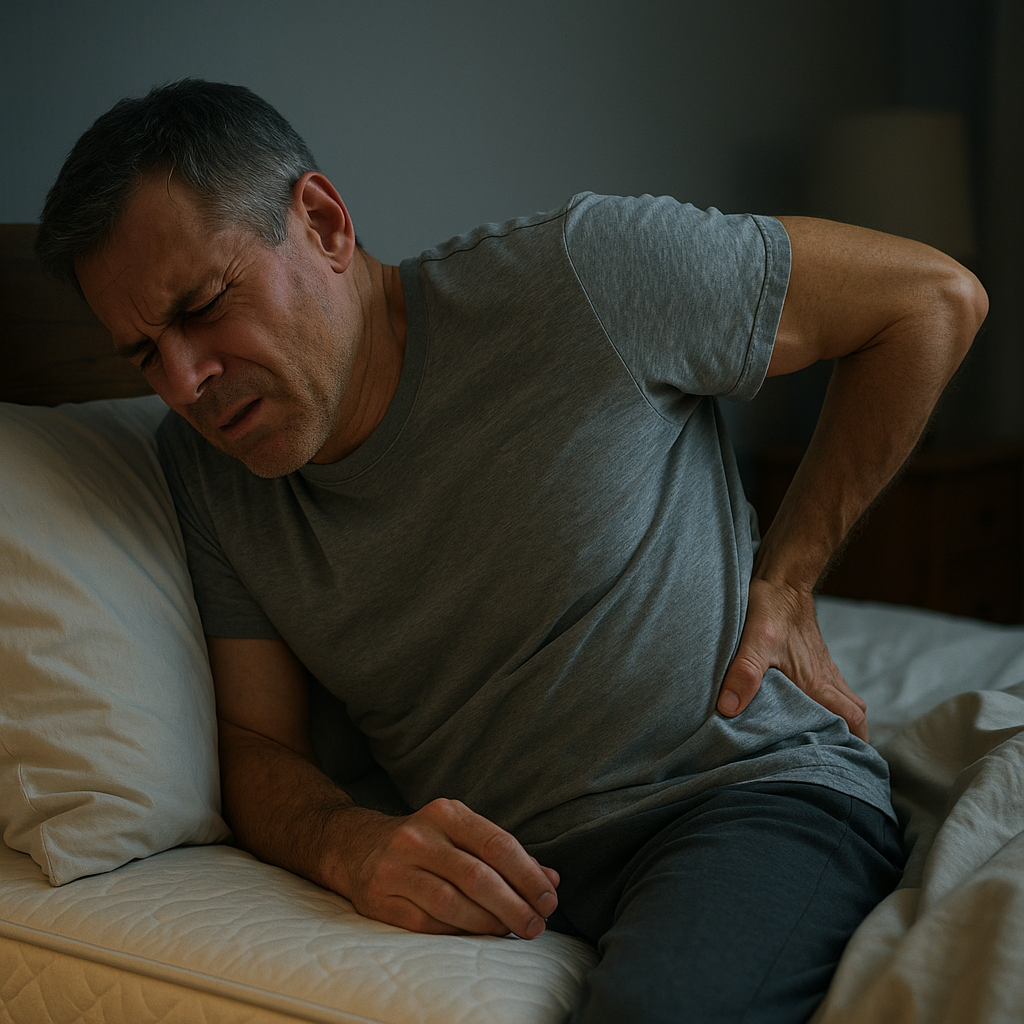Lower back pain is a common ailment that affects millions of people worldwide, often disrupting daily activities and diminishing quality of life. Whether it's due to prolonged sitting, poor posture, or strenuous activities, this discomfort can be both physically and mentally draining. As individuals seek relief, stretching emerges as a non-invasive and effective solution to alleviate lower back pain. By incorporating targeted stretches into your routine, you can reduce tension, improve flexibility, and enhance spinal mobility, paving the way for a healthier back.
the impact of stretching on lower back pain
Stretching plays a pivotal role in managing lower back pain by addressing muscle tightness and improving overall flexibility. When performed correctly, stretches can relieve tension in the muscles surrounding the spine, allowing for greater range of motion and reducing the risk of injury. Moreover, stretching helps in enhancing blood circulation, which is crucial for muscle recovery and pain reduction.
It's important to note that effective stretching routines don't just focus on the lower back itself. Instead, they target a network of related muscle groups, including the gluteals, hamstrings, and hip flexors. By engaging these areas, you can achieve a more comprehensive approach to pain relief and mobility improvement. The interconnectedness of these muscles means that tension in one area can affect another, so a holistic stretching routine is essential for optimal results.
targeting related muscle groups for comprehensive relief
To effectively stretch the lower back, it's beneficial to incorporate exercises that address the gluteals, hamstrings, and hip flexors. These muscle groups are integral to the support and movement of the lower back, and their flexibility can significantly influence back health. For instance, tight hamstrings can pull on the pelvis, leading to increased strain on the lower back. Similarly, tension in the hip flexors can affect posture and spinal alignment.
By incorporating stretches that focus on these areas, you not only alleviate existing pain but also build a foundation for preventing future discomfort. This proactive approach ensures that your body remains balanced and resilient, capable of handling the stresses of daily life without succumbing to pain.
In the following sections, we will explore expert-recommended stretches designed to target these key muscle groups. These stretches are not only effective but also easy to incorporate into your daily routine, providing a practical and accessible solution for managing lower back pain.
expert-recommended stretches for lower back relief
Integrating specific stretches into your routine can significantly alleviate lower back pain. Here are some expert-approved moves designed to target key muscle groups and enhance flexibility and spinal mobility.
child’s pose
The child’s pose is a gentle yoga position that helps relax the spine and stretch the lower back. To perform this stretch, kneel on the floor, sit back on your heels, and extend your arms forward on the ground. This position gently elongates the spine, releasing tension and promoting relaxation. It's an excellent starting point for anyone experiencing lower back discomfort.
knee-to-chest stretch
This stretch is particularly effective for relieving tension in the lumbar region and gluteals. Begin by lying on your back, then gently pull one knee towards your chest while keeping the other leg extended on the floor. Hold this position for 20 to 30 seconds, feeling the stretch in your lower back and glutes. Repeat on the other side for balanced relief.
figure four stretch
The figure four stretch targets the piriformis and gluteal muscles, which can contribute to lower back pain if tight. Start by lying on your back and crossing one ankle over the opposite knee. Grasp the uncrossed leg and gently pull both legs towards your chest. This position opens up the hips and alleviates tension in the lower back.
pelvic tilt
The pelvic tilt is a simple yet effective exercise to strengthen the core muscles, which support the lower back. Lie on your back with your knees bent and feet flat on the floor. Flatten your lower back against the floor by tilting your pelvis upward, engaging your abdominal muscles. Hold this position for a few seconds before releasing. This exercise helps stabilize the spine and reduce lower back strain.
lumbar rotation
Enhancing spinal flexibility is crucial for lower back health, and the lumbar rotation stretch can help achieve this. Lie on your back with your arms outstretched to the sides. Bend your knees and gently rotate them to one side while keeping your shoulders flat on the floor. Hold for a few seconds and repeat on the other side. This stretch not only benefits the lower back but also promotes overall spinal mobility.
hamstring stretch
Tight hamstrings can contribute to lower back pain by increasing strain on the lumbar region. To stretch your hamstrings, you can either stand or sit and reach for your toes, keeping your legs straight. This stretch helps ease tension in the hamstrings and supports lower back health.
mckenzie extension
The McKenzie extension is particularly beneficial for supporting lumbar spine health. Lie face down on the floor and slowly push up with your arms, keeping your hips on the floor. This movement extends the lower back and can help alleviate pain associated with disc issues.
execution tips for safe and effective stretching
To ensure the effectiveness and safety of these stretches, consider the following tips:
- Move slowly and avoid bouncing to prevent injury.
- Hold each stretch for 20 to 60 seconds, repeating as comfortable.
- Incorporate deep breathing during each stretch to enhance relaxation.
- Modify stretches using props like towels or foam rollers for added comfort.
By incorporating these expert-recommended stretches into your routine, you can effectively manage lower back pain and improve your overall spinal health. Remember to listen to your body and consult a healthcare professional if you experience persistent pain or discomfort. Stretching, when done correctly, can be a powerful tool in your journey towards a pain-free lower back.

Lumbar support belt
Lower back support belt for stabilisation and relief of pain and tension.
Complementary practices for enhanced lower back health
While stretching is a key component in alleviating lower back pain, integrating complementary practices can further enhance your results. Strengthening your core through exercises like planks and pelvic tilts is crucial, as a strong core supports the spine and reduces strain on the lower back. Regularly engaging in core-strengthening exercises can help maintain spinal alignment and prevent future discomfort.
Additionally, using ergonomic aids can play a significant role in supporting your lower back. Lumbar supports, posture aids, and ergonomic chairs are designed to maintain proper spinal alignment and reduce pressure on the lower back during daily activities. Incorporating these aids into your routine, especially if you spend long hours sitting, can complement the benefits of stretching and core strengthening exercises.

Men's Posture Shirt™ - White
Posture correcting shirt with patented NeuroBand™ technology for posture and pain relief.
Common mistakes and precautions
While stretching offers numerous benefits, it's important to be mindful of common mistakes that can hinder your progress or cause injury. Avoid overstretching, as pushing your body beyond its limits can lead to muscle strains or tears. Instead, ease into each stretch and listen to your body’s signals. Jerky movements should also be avoided, as they can cause unnecessary stress on the muscles and joints.
If you experience persistent or worsening pain, it is crucial to seek professional guidance. A healthcare professional can provide personalized advice and ensure that your stretching routine is safe and effective. Remember, while stretching can significantly reduce lower back pain, it is not a substitute for medical evaluation and treatment when necessary.
Frequently asked questions
What is the best time of day to stretch?
Stretching can be beneficial at any time of day, but many find that morning or post-exercise sessions are ideal. Morning stretches help awaken the muscles and prepare them for the day, while post-exercise stretching can aid in recovery and increase flexibility when muscles are warm.
How often should I perform these stretches?
Incorporating these stretches into your daily routine is recommended for optimal results. However, frequency can be adjusted based on your personal comfort and pain levels. Consistency is key, so aim to stretch regularly to maintain flexibility and reduce tension.
Can stretching completely cure lower back pain?
Stretching can significantly alleviate lower back pain and improve function, but it may not completely cure underlying conditions. If your pain persists, it is advisable to consult a healthcare professional for a comprehensive evaluation and treatment plan.
What should I do if a stretch causes pain?
If you experience pain during a stretch, stop immediately and assess your form. Modifying the stretch or using props for support may help. If pain continues, consult a healthcare professional to ensure your routine is safe and appropriate for your condition.
By incorporating these expert-approved stretches and complementary practices into your lifestyle, you can effectively manage lower back pain and promote long-term spinal health. Remember to listen to your body, avoid common mistakes, and seek professional guidance when necessary to ensure a safe and effective approach to pain relief.
Källor
- Medical News Today. (2019). "The Best Stretches and Exercises for Lower Back Pain."
- Cedars-Sinai. (2021). "The Best Stretches and Exercises for Lower Back Pain."
- Peloton. (2022). "How to Stretch Your Lower Back."
- Healthline. (2020). "Lower Back Stretches: Exercises for Pain Relief."
- Hospital for Special Surgery. (2021). "Exercises for Lower Back Pain."
- YouTube. (2023). "Lower Back Pain Relief Stretches."
- British Heart Foundation. (2022). "Exercises for Lower Back Pain."
- Mayo Clinic Health System. (2021). "Low Back Pain Exercises."


















